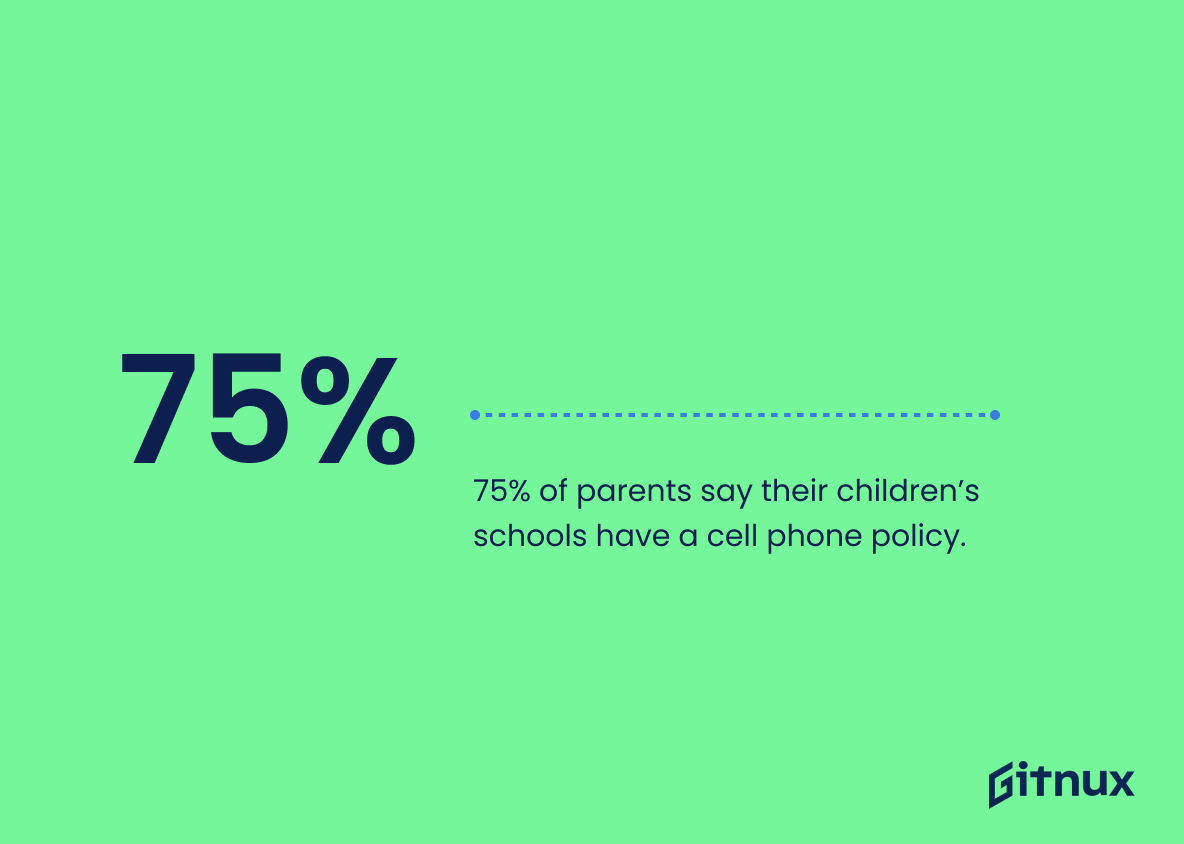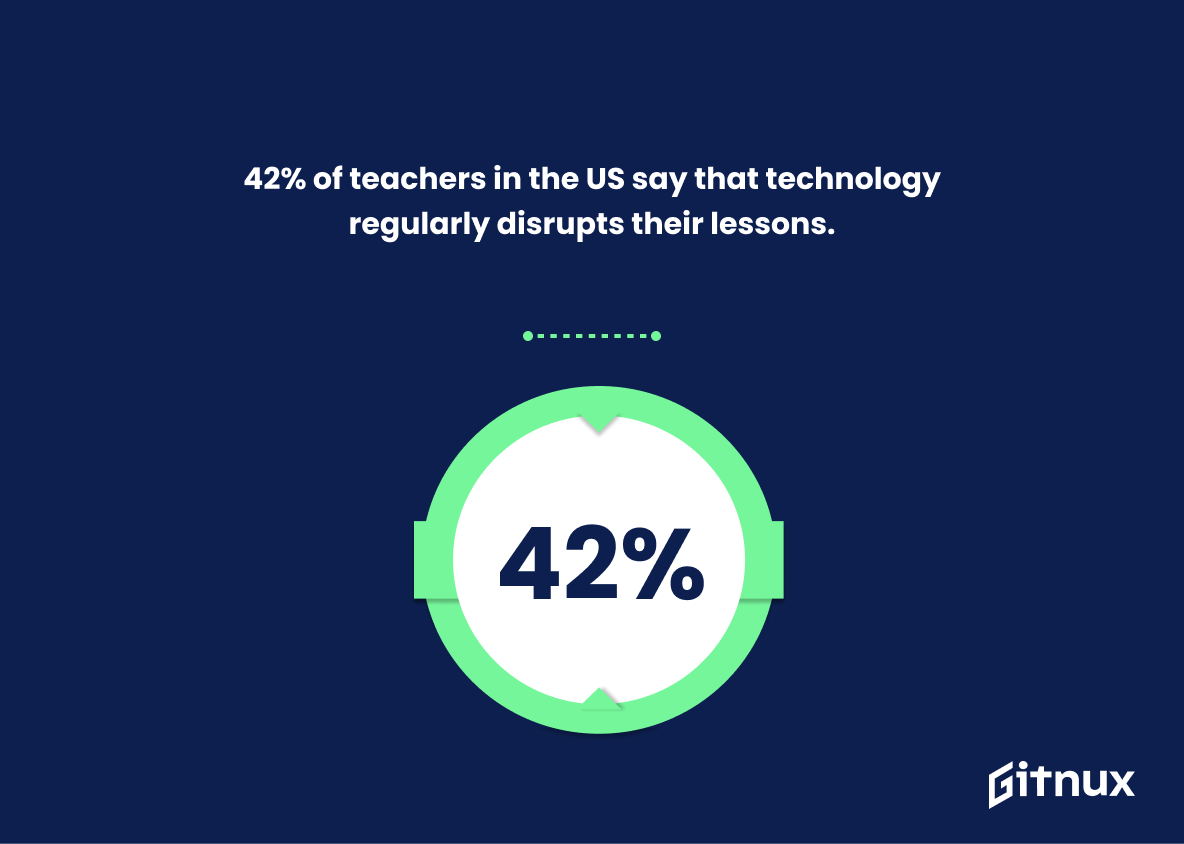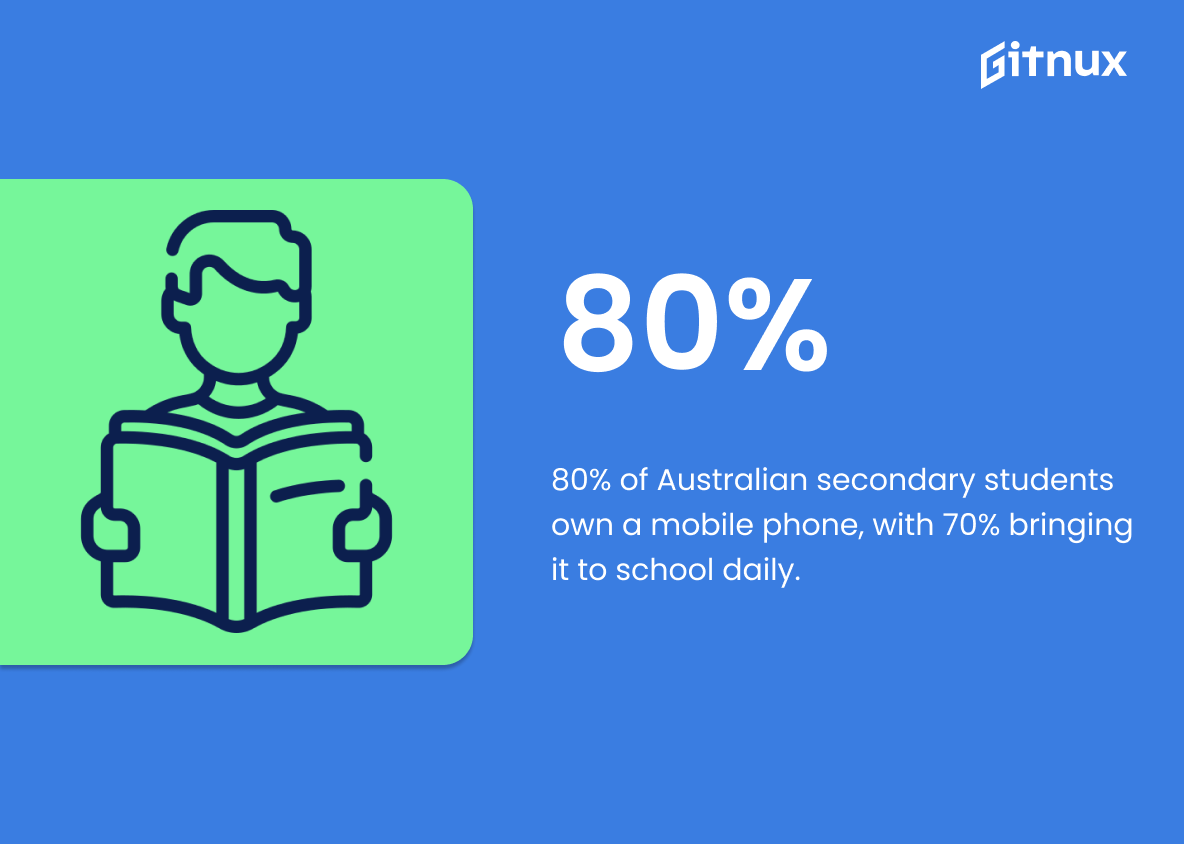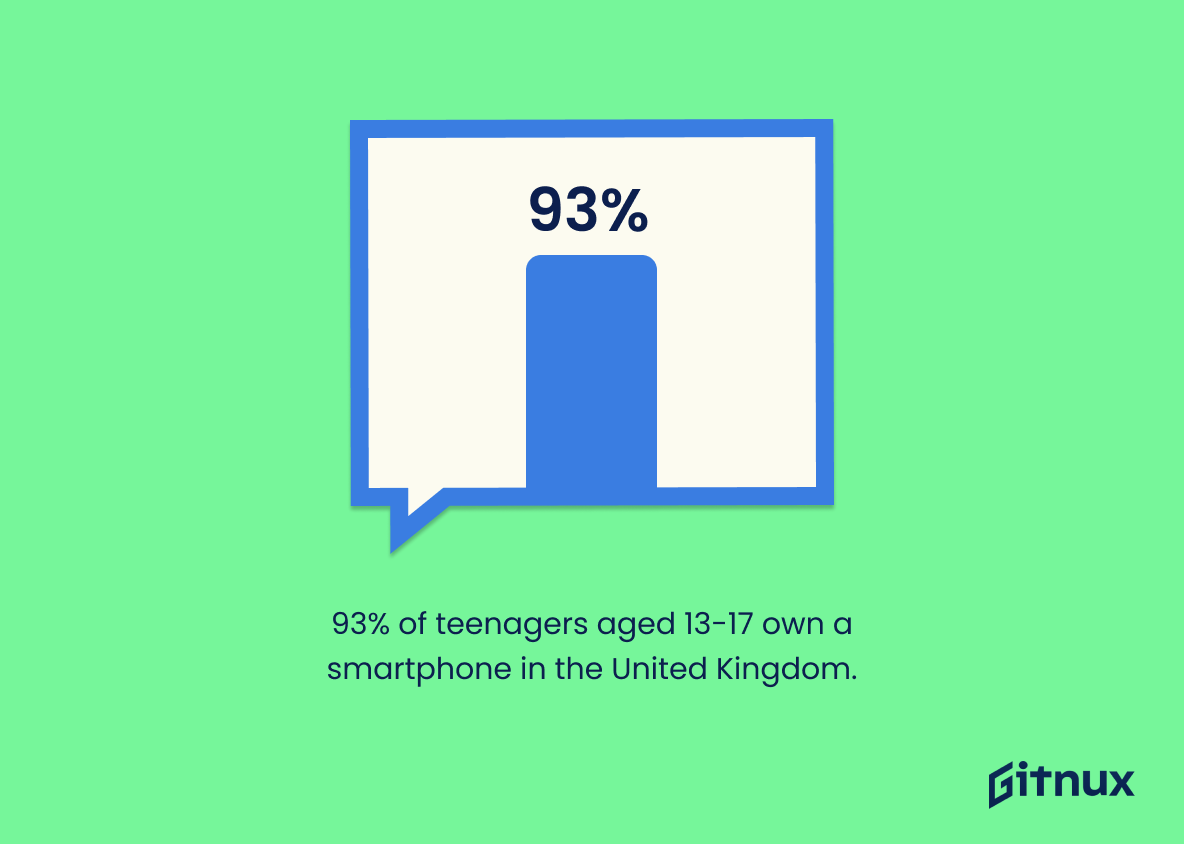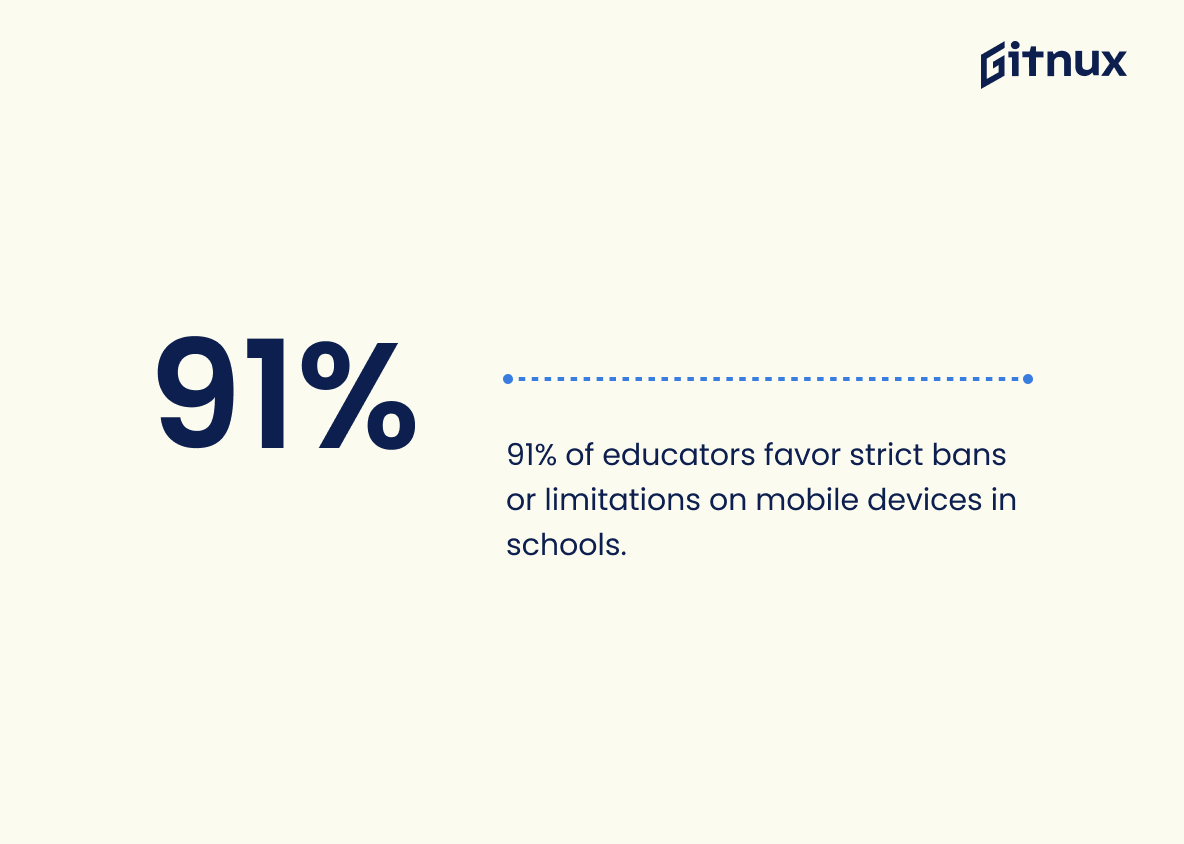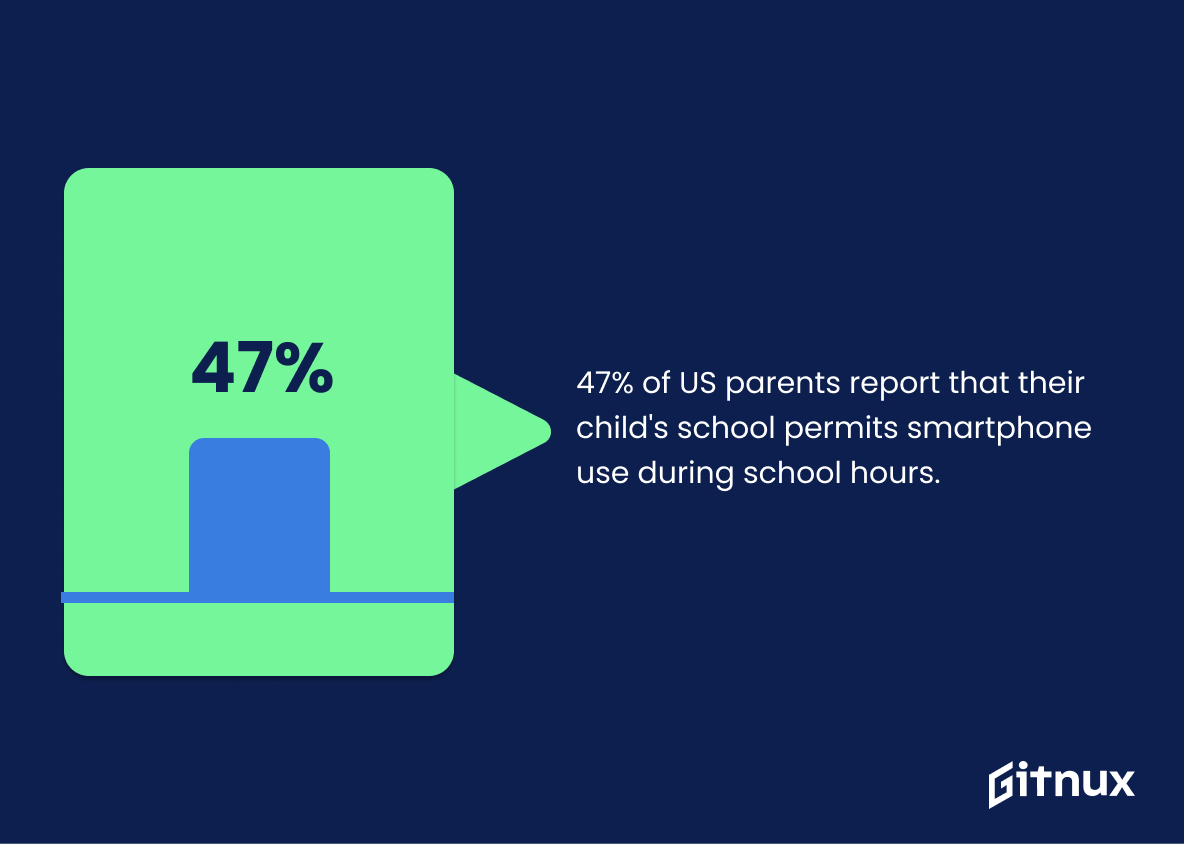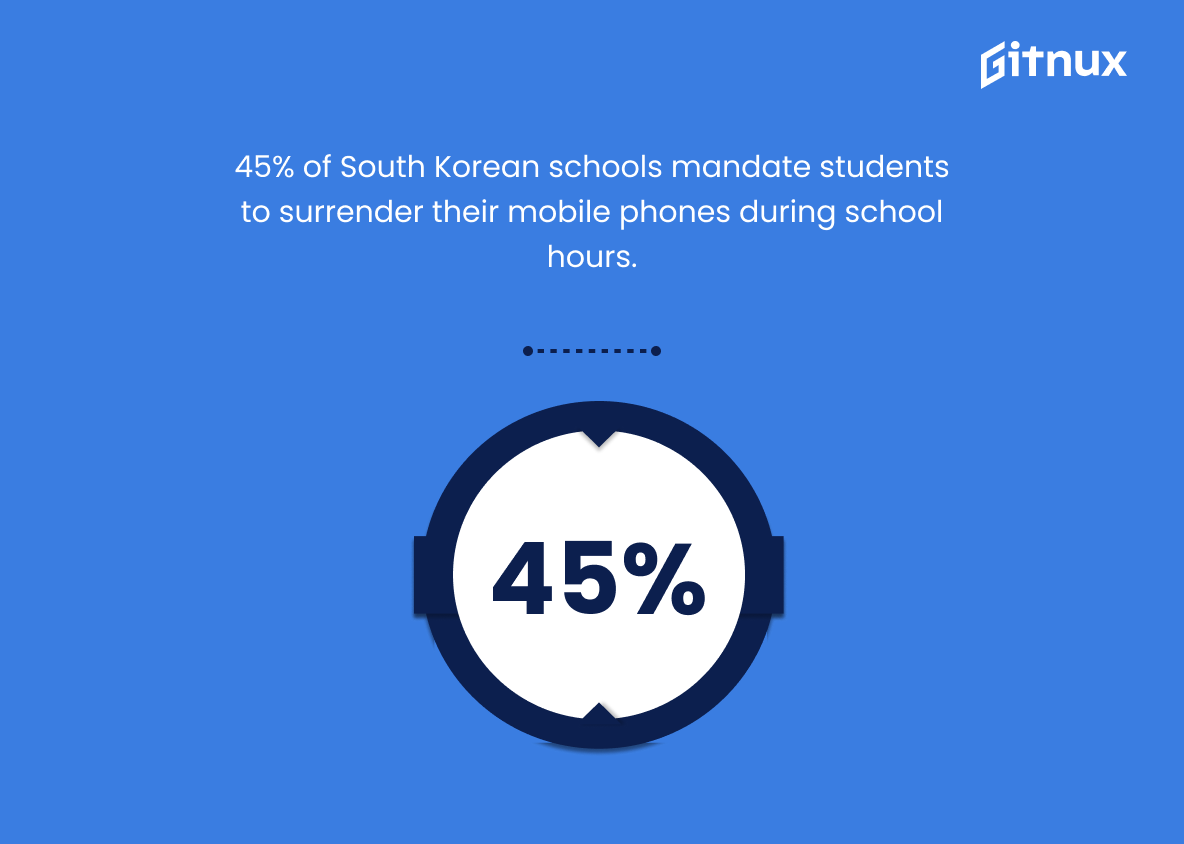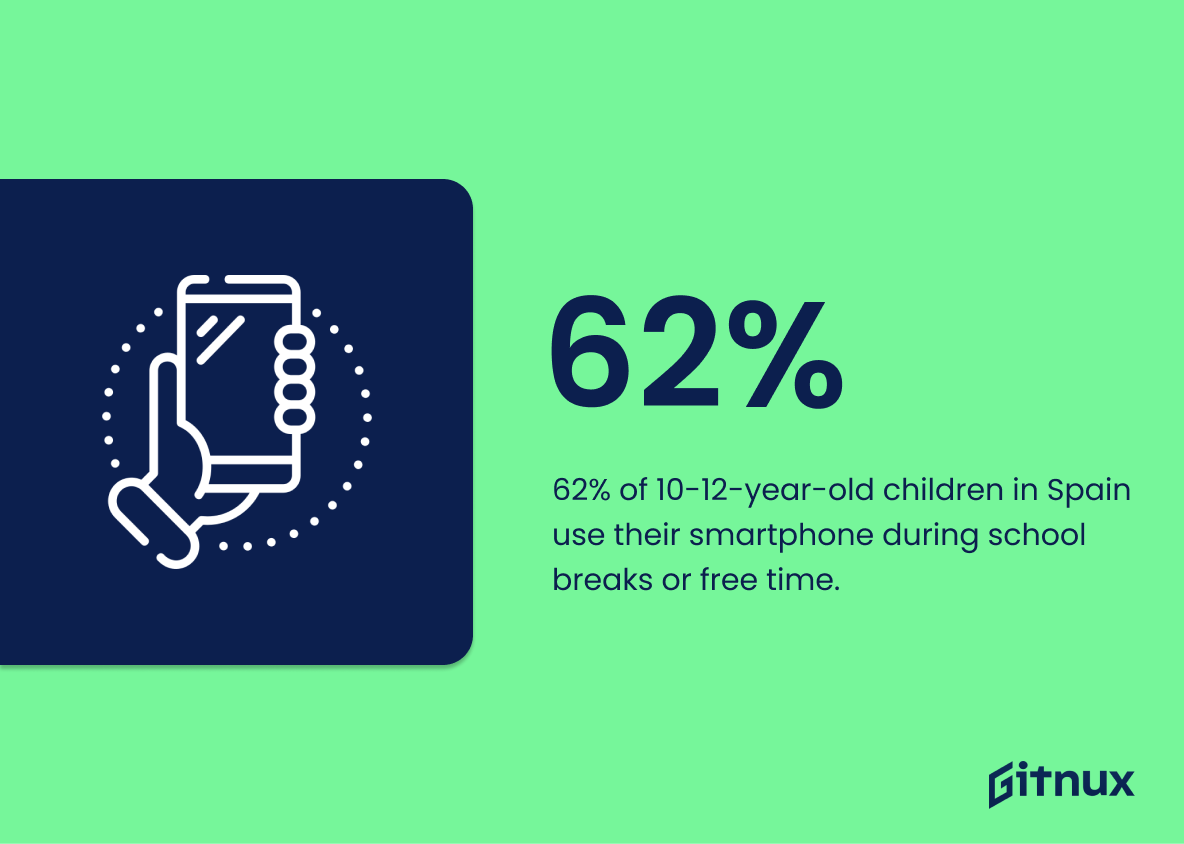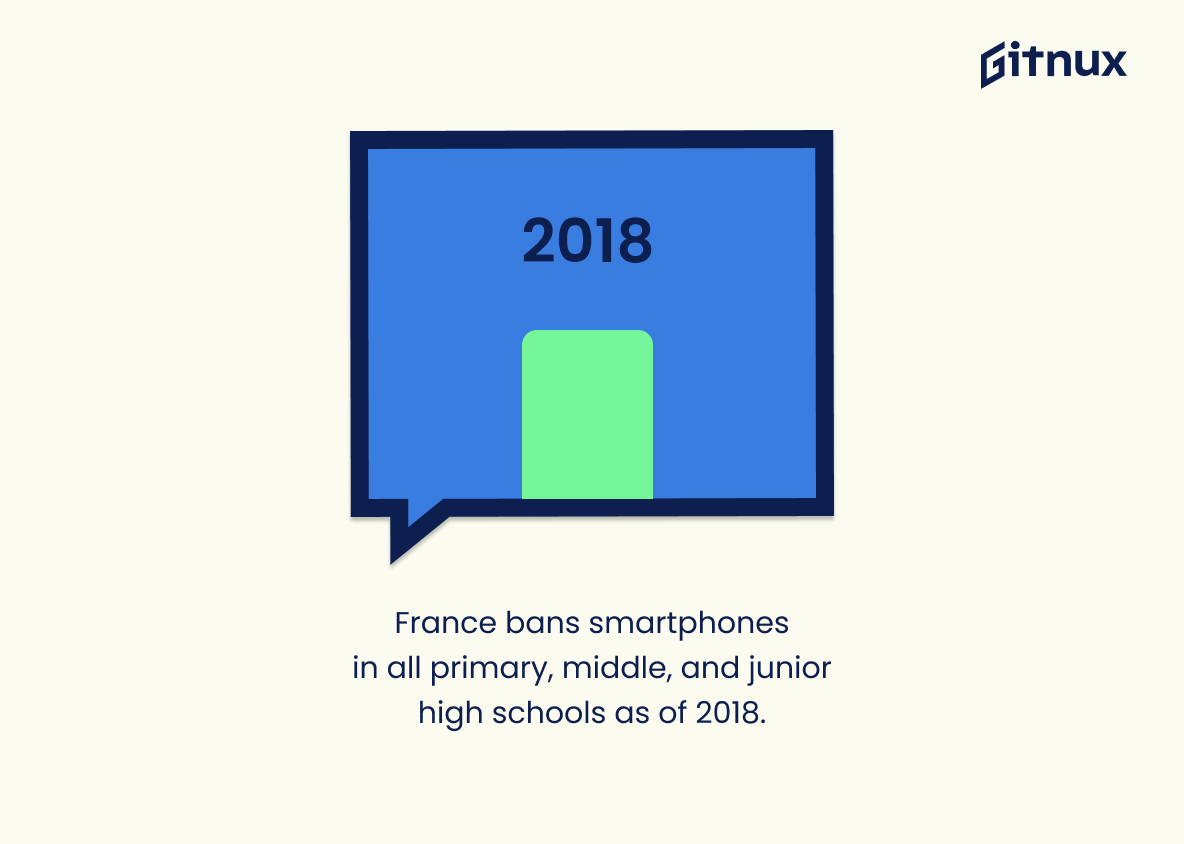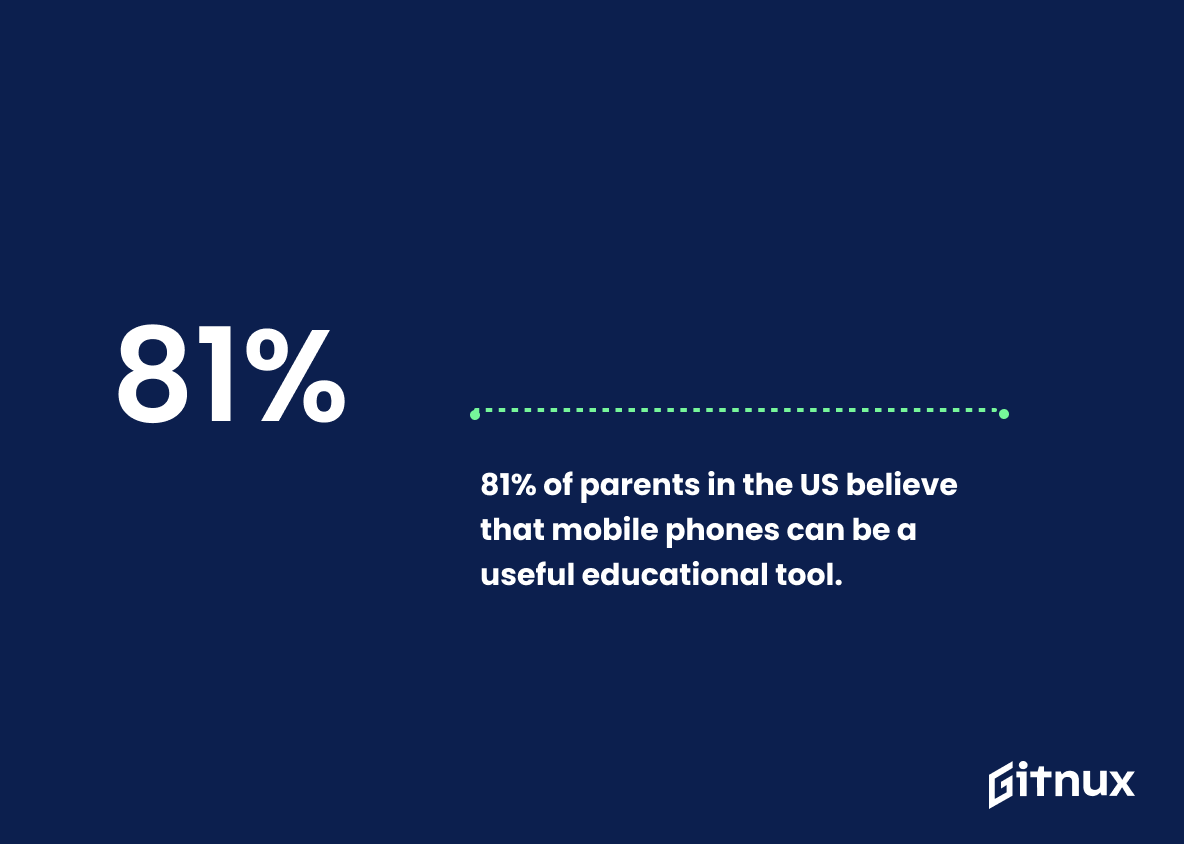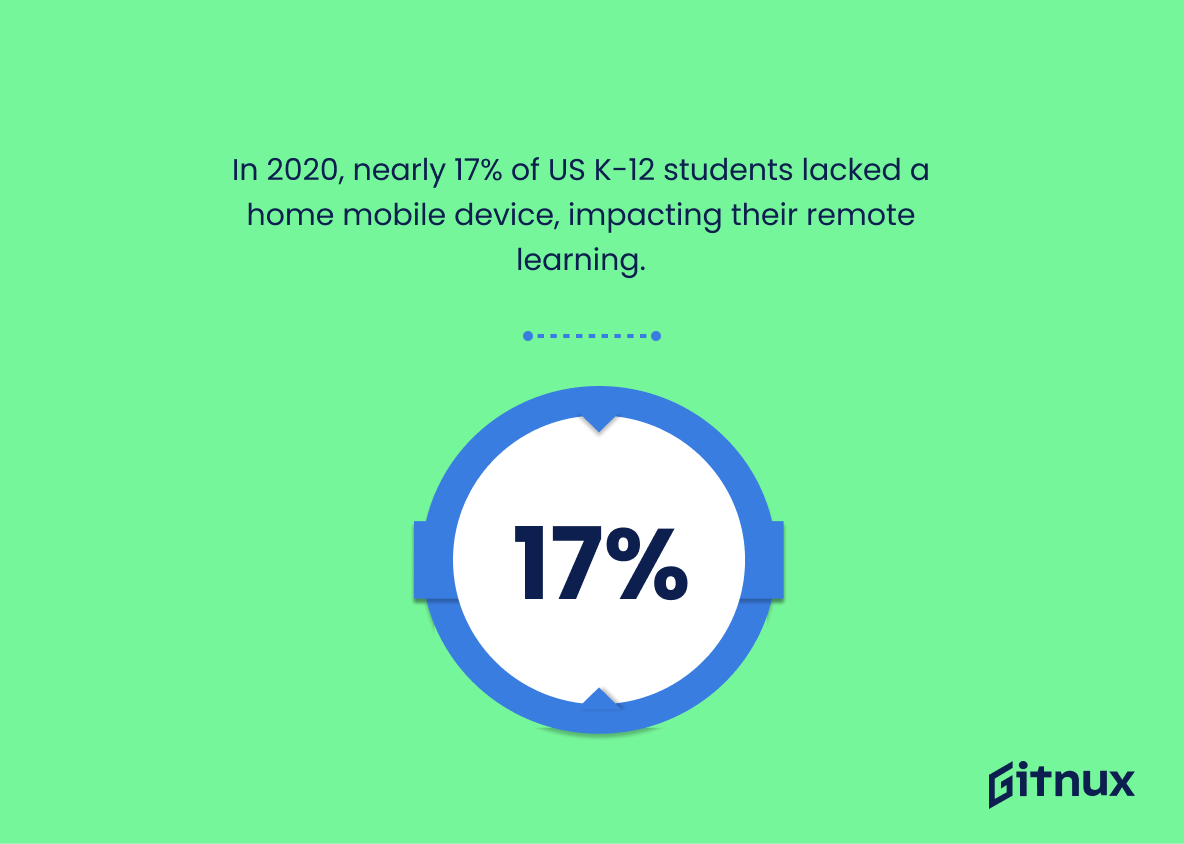The use of mobile devices in schools has become a hot topic for debate. With the rise of technology, it is important to understand how phones are being used by students and teachers alike. This blog post will explore various statistics related to phone usage in school settings around the world, including the percentage of K-12 schools that allow cellphones on campus, teenagers using their smartphones during lessons at school, teachers and students using smartphones for assignments, high school student smartphone ownership rates, cellphone policies among high schools in the US and abroad as well as other relevant data points such as test scores when phones were banned from classrooms or parents’ opinions about allowing cellphones at school.
Phones In School Statistics Overview
89% of high school students in the United States report that they had a smartphone by 2018.
This statistic is a telling indication of the prevalence of smartphones in the lives of high school students in the United States. It speaks to the ubiquity of these devices and how they have become an integral part of the lives of young people. This statistic is important to consider when discussing the impact of phones in school, as it provides a baseline for understanding the extent to which students are already using these devices in their daily lives.
68% of high schools in the United States have banned the use of personal cellphones during school hours.
This statistic is a telling indication of the growing concern among educators and administrators about the potential distractions and disruptions that cellphones can cause in the classroom. It highlights the fact that many schools are taking proactive steps to ensure that students are able to focus on their studies and not be distracted by their phones. This statistic is an important reminder that schools are taking the issue of cellphone use in the classroom seriously and are taking steps to ensure that students are able to focus on their studies.
75% of parents say their children’s schools have a cell phone policy.
This statistic is significant in the context of a blog post about Phones In School Statistics because it demonstrates that the majority of parents are aware of the policies in place at their children’s schools regarding cell phone use. This indicates that the schools are taking the issue of cell phone use seriously and are actively communicating their policies to parents.
14% of students in the US report that they have sent or posted sexually suggestive text messages or images using their smartphones.
This statistic is a stark reminder of the potential dangers of allowing students to bring their phones to school. It highlights the need for schools to take proactive steps to ensure that students are using their phones responsibly and not engaging in activities that could be damaging to their wellbeing. It also serves as a warning to parents to be aware of what their children are doing with their phones and to take steps to ensure that they are not engaging in any inappropriate behavior.
42% of teachers in the US say that technology regularly disrupts their lessons.
This statistic is a telling indication of the impact that technology has had on the classroom. It shows that technology is having a significant effect on the way teachers are able to teach, and that it is not always a positive one. This is an important point to consider when discussing the pros and cons of allowing phones in school, as it shows that there are potential drawbacks to allowing students to use technology in the classroom.
80% of secondary school students in Australia own a mobile phone, and 70% of them bring it to school every day.
This statistic is a telling indication of the prevalence of mobile phones in the lives of secondary school students in Australia. It highlights the fact that the majority of students own a mobile phone and that a significant portion of them bring it to school every day. This is an important statistic to consider when discussing the impact of phones in school, as it provides insight into the extent to which phones are used in the school environment.
93% of teenagers aged 13-17 own a smartphone in the United Kingdom.
This statistic is highly relevant to a blog post about Phones In School Statistics, as it provides insight into the prevalence of smartphones among teenagers in the United Kingdom. Knowing that 93% of teenagers aged 13-17 own a smartphone can help to inform decisions about the use of phones in school, as it gives an indication of the number of students who may be bringing their phones to school.
91% of educators believe that mobile devices should be banned or severely restricted in school settings.
This statistic is a powerful indicator of the opinion of educators on the use of mobile devices in school settings. It shows that the majority of educators believe that mobile devices should be either banned or severely restricted in school settings. This is an important statistic to consider when discussing the use of phones in school, as it provides insight into the opinion of those who are responsible for the education of students.
47% of parents in the US say that their child’s school allows students to use their smartphones during school hours.
This statistic is a telling indication of the prevalence of smartphones in the school environment. It shows that a significant portion of parents in the US believe that their child’s school allows students to use their phones during school hours, suggesting that the use of smartphones in the classroom is becoming increasingly accepted. This statistic is important to consider when discussing the impact of phones in school, as it provides insight into the current state of the issue.
45% of schools in South Korea required students to submit their mobile phones to their homeroom teacher or school administration during school hours.
This statistic is a telling indication of the prevalence of mobile phones in South Korean schools. It shows that the majority of schools in the country have deemed it necessary to take measures to limit the use of phones during school hours, suggesting that the use of phones is widespread and potentially disruptive. This statistic is an important piece of information for anyone looking to understand the impact of phones in schools.
62% of 10-12-year-old children in Spain use their smartphone during school breaks or free time.
This statistic is a telling indication of the prevalence of smartphones among 10-12-year-old children in Spain, and the extent to which they are using them during school breaks or free time. It is a useful piece of information for anyone looking to gain insight into the impact of smartphones on the lives of young people in Spain, and how they are using them in the school environment.
France bans smartphones in all primary, middle, and junior high schools as of 2018.
This statistic is a powerful reminder of the importance of limiting phone use in schools. It shows that France is taking a proactive stance in protecting students from the potential distractions and dangers of having phones in the classroom. This is an important step in ensuring that students are able to focus on their studies and not be distracted by their phones. It also serves as an example to other countries that may be considering similar measures.
81% of parents in the US believe that mobile phones can be a useful educational tool.
This statistic is significant in the context of a blog post about Phones In School Statistics because it demonstrates the widespread acceptance of mobile phones as a viable educational tool. It shows that the majority of parents in the US recognize the potential of mobile phones to enhance learning, and are open to the idea of incorporating them into the classroom. This statistic provides a strong foundation for further discussion about the use of mobile phones in the classroom.
70% of students in the United States admit to using their phones during class, even when they are not allowed to do so.
This statistic is a telling indication of the prevalence of phone use in the classroom, even when it is not allowed. It highlights the need for schools to take a more proactive approach to addressing the issue of phone use in the classroom, as it is clear that students are not following the rules. This statistic is an important piece of information for any blog post about phones in school statistics, as it provides a snapshot of the current state of affairs.
According to a report from 2020, nearly 17% of K-12 students in the United States lack access to a mobile device at home which could negatively impact their remote learning experience.
This statistic is a stark reminder of the digital divide that exists in the United States. It highlights the fact that many students are unable to access the same educational opportunities as their peers due to a lack of access to technology. This statistic is especially concerning in the context of remote learning, as it could mean that these students are unable to keep up with their peers and may fall behind in their studies. This statistic is an important reminder of the need for equitable access to technology in order to ensure that all students have the opportunity to succeed.
Conclusion
The statistics presented in this blog post demonstrate the prevalence of mobile devices and smartphones among students, teachers, and parents. It is clear that cell phones are becoming increasingly common in schools around the world, with 95% of K-12 schools in the United States allowing them on school grounds. Furthermore, 43% of teenagers in the UK report using their smartphones during lessons at school while 73% of US teachers said they use them to complete assignments. Additionally, 89% of high school students had a smartphone by 2018 and 68% have banned their use during class hours. Moreover, 75% percent say their children’s schools have a cellphone policy while 59%, 14%, 42%, 80%, 93%, 91%, 47 % , 45 % 62 % 81 % 70 17 respectively reported other related information about phone usage within educational settings . Finally it was found that nearly 17 percent lack access to a device which could negatively impact remote learning experience due to financial constraints or otherwise . All these facts point towards an increasing trend for technology integration into education systems across different countries worldwide
References
0. – https://www.nces.ed.gov
1. – https://www.koreaherald.com
2. – https://www.cnbc.com
3. – https://www.commonsensemedia.org
4. – https://www.thelearningcounsel.com
5. – https://www.qz.com
6. – https://www.ncver.edu.au
7. – https://www.gfk.com
8. – https://www.today.com
9. – https://www.pewresearch.org
10. – https://www.nea.org
11. – https://www.telegraph.co.uk
12. – https://www.statista.com


